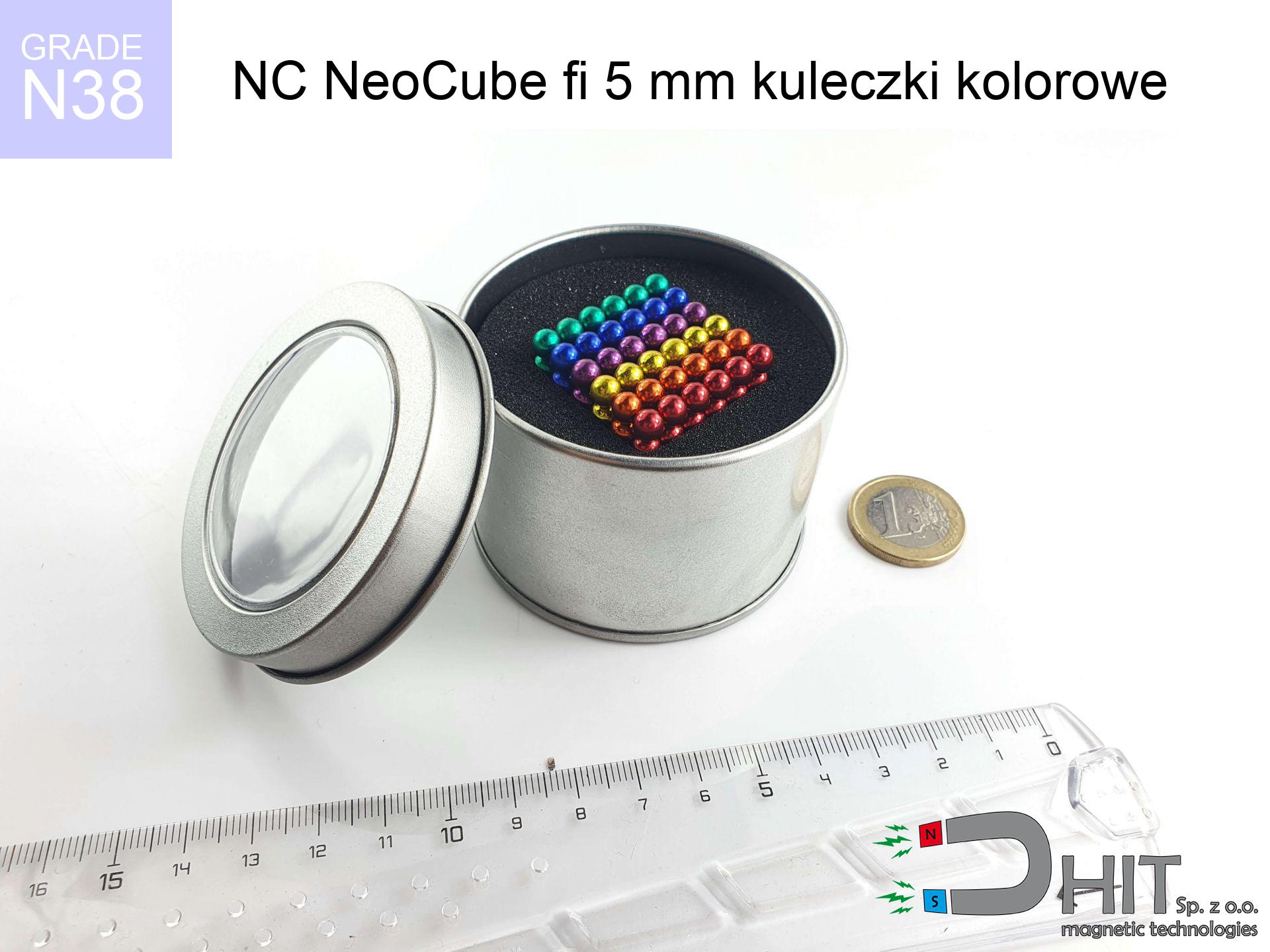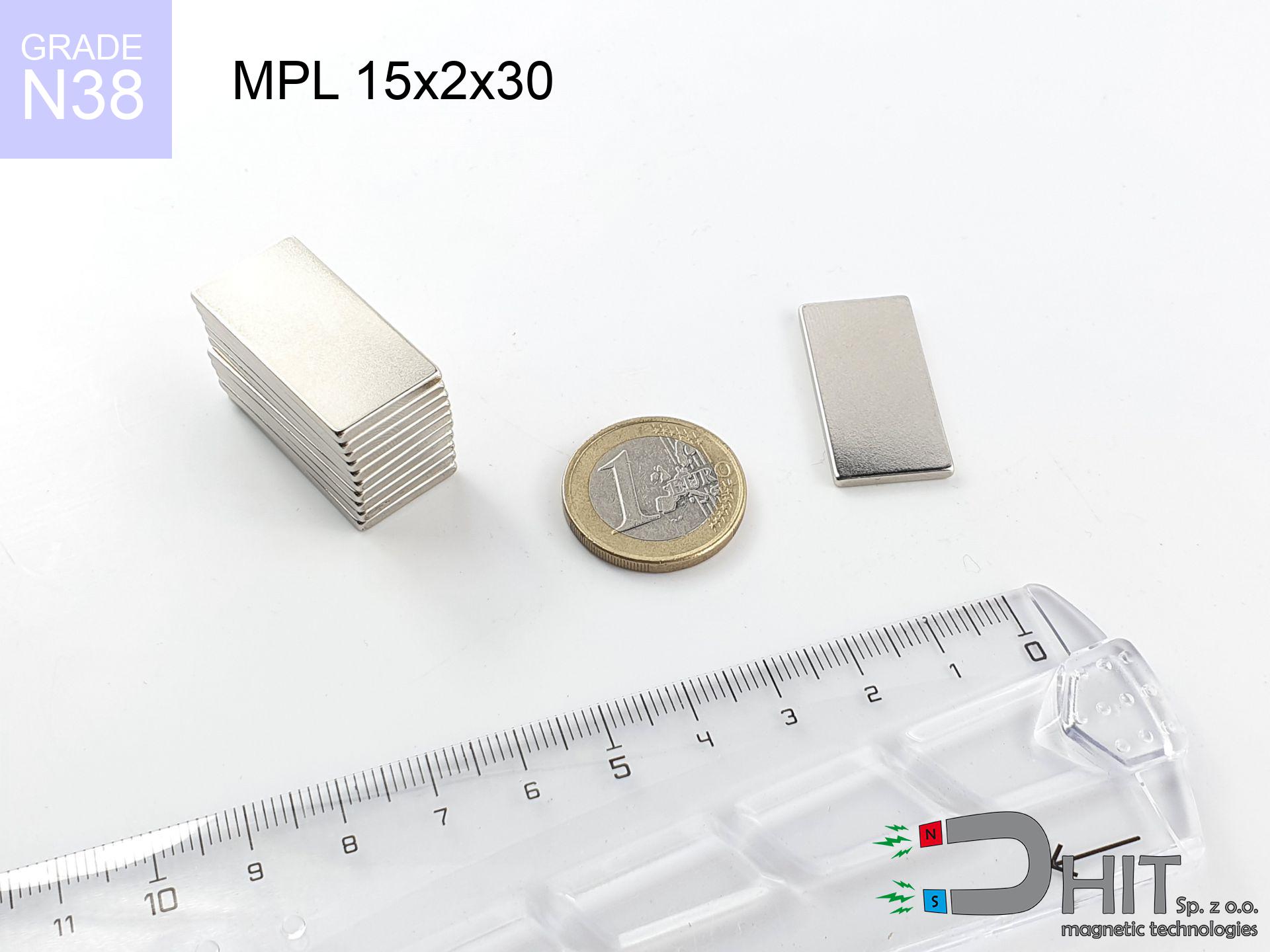NC NeoCube fi 5 mm kuleczki kolorowe / N38 - neocube
neocube
Catalog no 120229
GTIN/EAN: 5906301812685
Weight
145 g
Magnetization Direction
↑ axial
Coating
[NiCuNi] Nickel
49.99 ZŁ with VAT / pcs + price for transport
40.64 ZŁ net + 23% VAT / pcs
bulk discounts:
Need more?
Contact us by phone
+48 888 99 98 98
if you prefer let us know using
inquiry form
through our site.
Parameters along with appearance of a magnet can be tested using our
magnetic mass calculator.
Orders submitted before 14:00 will be dispatched today!
Technical parameters of the product - NC NeoCube fi 5 mm kuleczki kolorowe / N38 - neocube
Specification / characteristics - NC NeoCube fi 5 mm kuleczki kolorowe / N38 - neocube
| properties | values |
|---|---|
| Cat. no. | 120229 |
| GTIN/EAN | 5906301812685 |
| Production/Distribution | Dhit sp. z o.o. |
| Country of origin | Poland / China / Germany |
| Customs code | 85059029 |
| Weight | 145 g |
| Magnetization Direction | ↑ axial |
| Coating | [NiCuNi] Nickel |
| Manufacturing Tolerance | ±1 mm |
Magnetic properties of material N38
| properties | values | units |
|---|---|---|
| remenance Br [min. - max.] ? | 12.2-12.6 | kGs |
| remenance Br [min. - max.] ? | 1220-1260 | mT |
| coercivity bHc ? | 10.8-11.5 | kOe |
| coercivity bHc ? | 860-915 | kA/m |
| actual internal force iHc | ≥ 12 | kOe |
| actual internal force iHc | ≥ 955 | kA/m |
| energy density [min. - max.] ? | 36-38 | BH max MGOe |
| energy density [min. - max.] ? | 287-303 | BH max KJ/m |
| max. temperature ? | ≤ 80 | °C |
Physical properties of sintered neodymium magnets Nd2Fe14B at 20°C
| properties | values | units |
|---|---|---|
| Vickers hardness | ≥550 | Hv |
| Density | ≥7.4 | g/cm3 |
| Curie Temperature TC | 312 - 380 | °C |
| Curie Temperature TF | 593 - 716 | °F |
| Specific resistance | 150 | μΩ⋅cm |
| Bending strength | 250 | MPa |
| Compressive strength | 1000~1100 | MPa |
| Thermal expansion parallel (∥) to orientation (M) | (3-4) x 10-6 | °C-1 |
| Thermal expansion perpendicular (⊥) to orientation (M) | -(1-3) x 10-6 | °C-1 |
| Young's modulus | 1.7 x 104 | kg/mm² |
Material specification
| iron (Fe) | 64% – 68% |
| neodymium (Nd) | 29% – 32% |
| boron (B) | 1.1% – 1.2% |
| dysprosium (Dy) | 0.5% – 2.0% |
| coating (Ni-Cu-Ni) | < 0.05% |
Environmental data
| recyclability (EoL) | 100% |
| recycled raw materials | ~10% (pre-cons) |
| carbon footprint | low / zredukowany |
| waste code (EWC) | 16 02 16 |
Other products
Pros and cons of Nd2Fe14B magnets.
Strengths
- They do not lose power, even after around ten years – the reduction in strength is only ~1% (according to tests),
- They have excellent resistance to weakening of magnetic properties due to external fields,
- Thanks to the reflective finish, the plating of Ni-Cu-Ni, gold-plated, or silver-plated gives an elegant appearance,
- Magnetic induction on the working layer of the magnet is strong,
- Due to their durability and thermal resistance, neodymium magnets can operate (depending on the form) even at high temperatures reaching 230°C or more...
- Thanks to versatility in forming and the ability to customize to individual projects,
- Wide application in modern industrial fields – they find application in data components, brushless drives, precision medical tools, also complex engineering applications.
- Compactness – despite small sizes they offer powerful magnetic field, making them ideal for precision applications
Weaknesses
- To avoid cracks under impact, we recommend using special steel housings. Such a solution secures the magnet and simultaneously increases its durability.
- Neodymium magnets lose their force under the influence of heating. As soon as 80°C is exceeded, many of them start losing their power. Therefore, we recommend our special magnets marked [AH], which maintain stability even at temperatures up to 230°C
- When exposed to humidity, magnets usually rust. For applications outside, it is recommended to use protective magnets, such as magnets in rubber or plastics, which prevent oxidation as well as corrosion.
- We recommend casing - magnetic mount, due to difficulties in producing threads inside the magnet and complex forms.
- Health risk to health – tiny shards of magnets pose a threat, if swallowed, which gains importance in the context of child safety. Furthermore, small components of these magnets are able to be problematic in diagnostics medical after entering the body.
- High unit price – neodymium magnets are more expensive than other types of magnets (e.g. ferrite), which can limit application in large quantities
Holding force characteristics
Maximum lifting force for a neodymium magnet – what contributes to it?
- with the application of a yoke made of special test steel, ensuring full magnetic saturation
- with a cross-section minimum 10 mm
- with an ideally smooth contact surface
- under conditions of ideal adhesion (metal-to-metal)
- for force applied at a right angle (pull-off, not shear)
- in stable room temperature
Lifting capacity in practice – influencing factors
- Space between magnet and steel – every millimeter of distance (caused e.g. by varnish or dirt) drastically reduces the pulling force, often by half at just 0.5 mm.
- Loading method – declared lifting capacity refers to pulling vertically. When attempting to slide, the magnet exhibits much less (typically approx. 20-30% of nominal force).
- Substrate thickness – to utilize 100% power, the steel must be adequately massive. Paper-thin metal restricts the attraction force (the magnet "punches through" it).
- Chemical composition of the base – low-carbon steel attracts best. Higher carbon content decrease magnetic properties and holding force.
- Surface condition – smooth surfaces guarantee perfect abutment, which increases field saturation. Uneven metal reduce efficiency.
- Operating temperature – NdFeB sinters have a sensitivity to temperature. When it is hot they lose power, and at low temperatures gain strength (up to a certain limit).
Lifting capacity testing was conducted on a smooth plate of optimal thickness, under perpendicular forces, however under shearing force the holding force is lower. Moreover, even a small distance between the magnet’s surface and the plate decreases the load capacity.
Safe handling of NdFeB magnets
Handling rules
Before starting, read the rules. Sudden snapping can destroy the magnet or injure your hand. Be predictive.
GPS and phone interference
Remember: neodymium magnets produce a field that disrupts precision electronics. Keep a separation from your phone, tablet, and navigation systems.
This is not a toy
Absolutely keep magnets away from children. Risk of swallowing is significant, and the effects of magnets connecting inside the body are tragic.
Electronic hazard
Data protection: Strong magnets can damage payment cards and delicate electronics (heart implants, medical aids, timepieces).
Machining danger
Combustion risk: Neodymium dust is highly flammable. Avoid machining magnets in home conditions as this may cause fire.
Heat sensitivity
Control the heat. Heating the magnet to high heat will destroy its properties and strength.
Serious injuries
Big blocks can smash fingers instantly. Do not put your hand betwixt two attracting surfaces.
Implant safety
Individuals with a pacemaker must keep an safe separation from magnets. The magnetism can interfere with the operation of the life-saving device.
Magnet fragility
Beware of splinters. Magnets can explode upon uncontrolled impact, launching shards into the air. Wear goggles.
Warning for allergy sufferers
Warning for allergy sufferers: The nickel-copper-nickel coating consists of nickel. If redness occurs, cease handling magnets and use protective gear.






![SM 25x175 [2xM8] / N42 - magnetic separator SM 25x175 [2xM8] / N42 - magnetic separator](https://cdn3.dhit.pl/graphics/products/sm-25x175-2xm8-fux.jpg)

